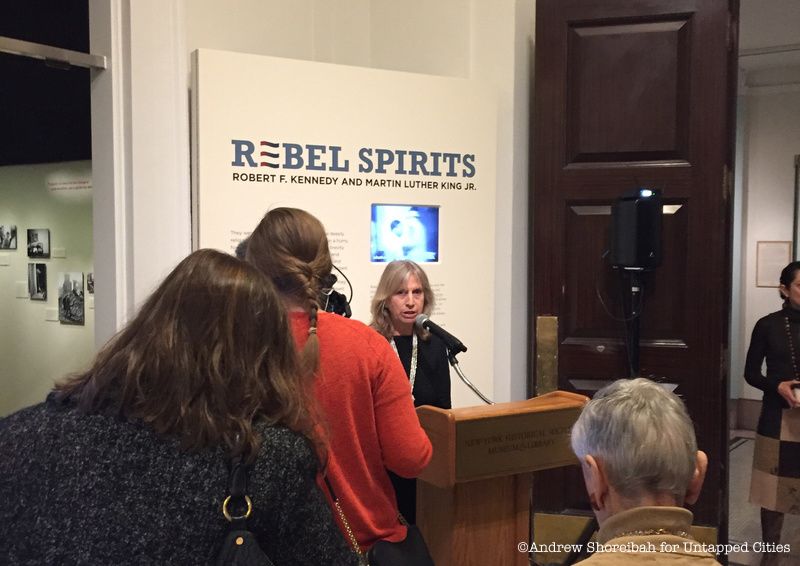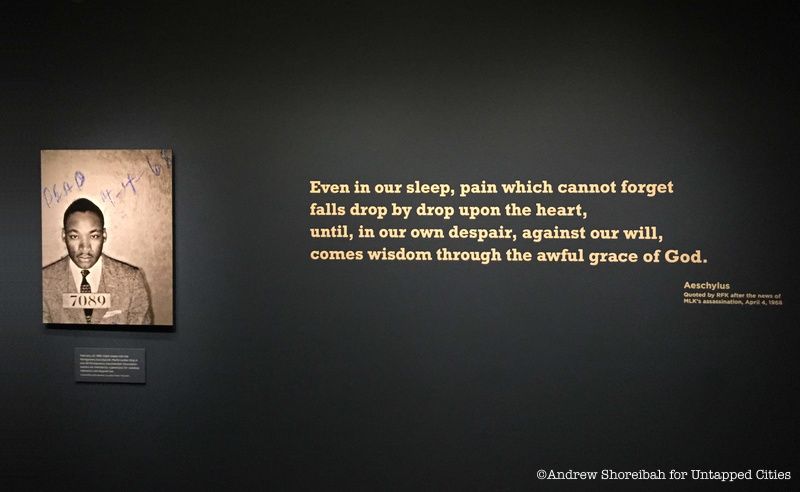Last-Minute NYC Holiday Gift Guide 🎁
We’ve created a holiday gift guide with presents for the intrepid New Yorker that should arrive just in time—


Both Martin Luther King Jr. and Robert F. Kennedy have played important roles in defining America, but many people only learn about them independently of one another. To debunk myths and certain historical narratives, The New-York Historical Society Museum & Library is showcasing a collection of photos that tell a compelling story of these two leaders. The exhibit, Rebel Spirits: Robert F. Kennedy and Martin Luther King Jr., commemorates the 50th anniversary of the assassinations of both men in 1968, and is partially based of the book, The Promise and the Dream (RosettaBooks), by David Margolick.


Margolick‘s book will be released in early April, and he hopes Rebel Spirits will allow viewers to gain a deeper understanding of the roles King and Kennedy played within certain historical movements and events. Margolick, who covered the O.J. Simpson trial for The New York Times, partnered with renowned photographer, Larry Schiller, to conceptualize and bring the exhibit to life. The photo series, which features images taken by some of the most renowned photojournalists of the era, is organized along with other ephemera to tell a story to the audience.
Schiller spent much of his career photographing historical movements and met both King and Kennedy. His own pictures of King speaking at rallies across the country are featured in the gallery.


The process of selecting photos for the exhibition was immensely involved, with Schiller having to sort through 21,000 images. Organized together, the collection is much like a photo essay reminiscent of ones published by Life Magazine. In total, the gallery features 61 photos and 30 documents that aim to retell the common historical narrative that both King and Kennedy worked closely together when in fact they lived in different political and social worlds. The series features photos of King marching and artifacts showcasing the FBI’s targeting of King. On the other hand, Kennedy came from a political dynasty and was more concerned with political implications rather than social justice movements. Even his brother John F. Kennedy seldom talked about the Civil Rights Movement during his presidential campaign.

While Schiller covered both King and Kennedy, he noticed the stark differences in their interactions with crowds and people. “Dr. King was dynamic and knew what to do and say at the right time and right place,” Schiller says. Kennedy could be characterized as more reserved and cautious, possibly wary of the politics of the Civil Rights Movement. Though they managed to live their lives independently of one another, “history has married them together,” Schiller stated at a press event for the exhibit. In time, the trajectory of their lives would overlap due to shared social concerns.
Some of the most powerful photos, for example, show King coming out against the Vietnam War, proving that his activism was multifaceted. Only one photo of King and Kennedy together is on display at the exhibit. Margolick says, “That’s not an accident…these were two men who were very wary of each other.”
Rebel Spirits: Robert F. Kennedy and Martin Luther King Jr. is now on view at the Pam and Scott Schafer Gallery at the New-York Historical Society through May 20, 2018.
Next, check out the places where Martin Luther King Jr. made his mark in NYC.
Subscribe to our newsletter